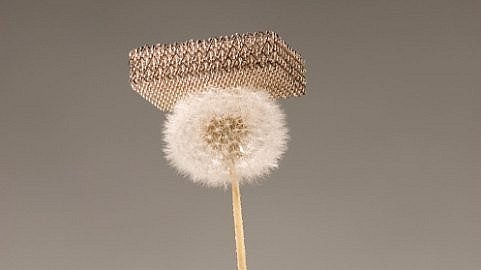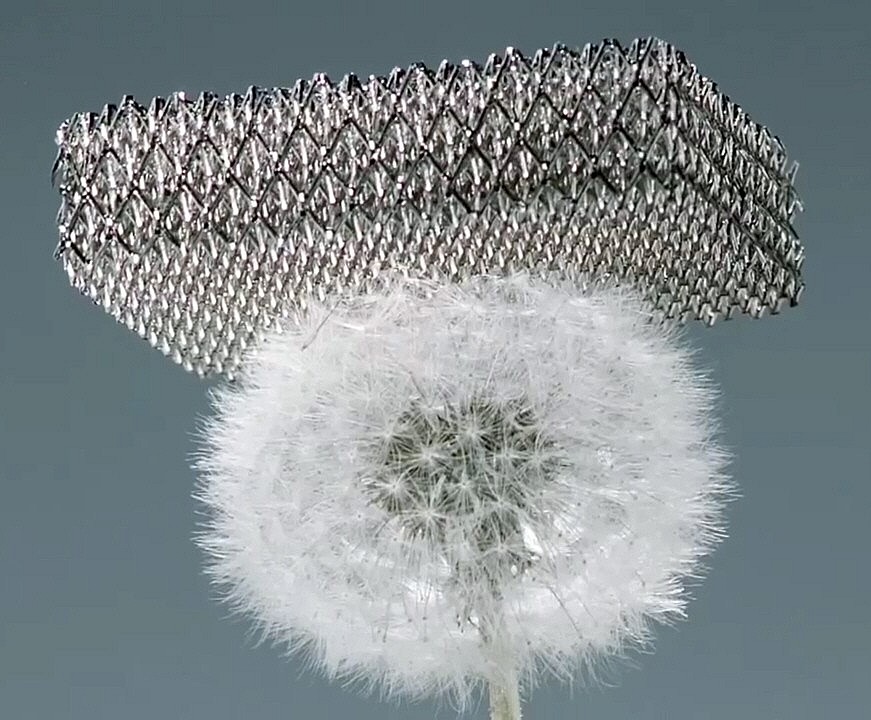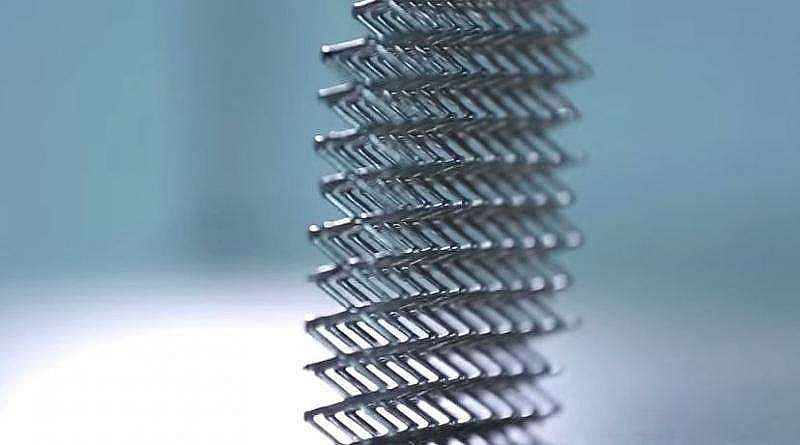What Is The Lightest Material On Earth?
 |
| What Is The Lightest Material On Earth - Photo HRL |
| Contents |
Scientists from HRL Laboratory in California (USA) have successfully fabricated a more optimal ultra-light material with an ordered structure. This new material has much higher stiffness, strength and conductivity than previous ultralight materials.
What is the Name of the Lightest Material in the world?
That’s metallic microlattice. This material was developed in 2011 by researchers at HRL Laboratories and unveiled in the November issue of Science. The researchers worked in conjunction with scientists based at Caltech and UC Irvine in order to create this revolutionary design.
What are the metallic microlattice’s characteristics?
 |
| Photo HRL |
Unlike styrofoam, this material is amazingly durable. In fact, it is so structurally sound that an egg wrapped in the material would survive a fall from a 25 story building totally intact-- according to the design team. In relation to compression, the material is able to withstand a strain of over 50 percent. And once this force is removed, the material is able to return to its original shape, ultimately resuming 98 percent of its height.
It is so light that it can sit atop a dandelion without a single hair falling inward. The scientists were inspired to utilize the microlattice structure by, of all things, biology.
The material consists of 99.99% air and the rest is microscopic nickel tubes about 100-500 microns long, linked together in a grid pattern.
The material has a density of 0.9mg/m3, lighter than the density of airgel materials (1mg/m3) and 200 times lighter than the density of Styrofoam.
How the Material Works
Our bones are solid on the outside but rather hollow on the inside. This makes them lightweight and easy to move, and also exceedingly firm. To that end, although it has a rather rigid exterior surface, the 3D open-cellular polymer assembly means that the structure is nearly 99.99 percent air.
| Dr. Bill Carter, manager of the Architected Materials Group at HRL, says that there are a number of potential applications for these microlattice materials, and draws parallels to larger structures for comparison: “Modern buildings, exemplified by the Eiffel Tower or the Golden Gate Bridge, are incredibly light and weight-efficient by virtue of their architectures. We are revolutionizing lightweight materials by bringing this concept to the materials level and designing their architectures at the nano and micro scales.” |
How to make metallic microlattice?
 |
| Photo boeing |
To produce their metallic microlattice, the HRL/UCI/Caltech team first prepared a polymer template using a technique based on self-propagating waveguide formation, though it was noted that other methods can be used to fabricate the template. The process passed UV light through a perforated mask into a reservoir of UV-curable resin. Fiber-optic-like "self-trapping" of the light occurred as the resin cured under each hole in the mask, forming a thin polymer fiber along the path of the light. By using multiple light beams, multiple fibers could then interconnect to form a lattice.
The process was similar to photolithography in that it used a two-dimensional mask to define the starting template structure, but differed in the rate of formation: where stereolithography might take hours to make a full structure, the self-forming waveguide process allowed templates to be formed in 10–100 seconds. In this way, the process enables large free-standing 3D lattice materials to be formed quickly and scalably. The template was then coated with a thin layer of metal by electroless nickel plating, and the template is etched away, leaving a free-standing, periodic porous metallic structure. Nickel was used as the microlattice metal in the original report. Owing to the electrodeposition process, 7% of the material consisted of dissolved phosphorus atoms, and it contained no precipitates.
READ MORE: Top 11 Rarest Elements On Earth Today
What is its application?
 |
| Photo boeing |
Experimental results show that the material has very good elasticity. It can return to its original state after being compressed to half of the size. With this property, the metal can be applied in the field of aerospace, sound insulation and impact resistance.
Direct applications have not yet been settled on, but might include structural reinforcement, shock absorption or heat transfer. Also not clear is whether we'll see these "microlattices" pop up first in airplanes—or cars. HRL Laboratories also does R&D for General Motors.
The metallic microlattice, as the researchers call it, could be useful for absorbing sound, vibration, and shock. Other possibilities, according to HRL: electrodes that could increase how much energy lithium-ion batteries can store and lower their manufacturing costs; air-cooling devices for computing electronics; and lighter-weight materials for automobiles, aircraft, and spacecraft.
Similar materialsA similar but denser material, consisting of an electrodeposited nanocrystalline nickel layer over a polymeric rapid-prototyped truss, was created by researchers at the University of Toronto in 2008. In 2012, German researchers created a carbon foam known as aerographite, with an even lower density than a metallic microlattice. In 2013, Chinese scientists developed a carbon-based aerogel which was claimed to be lighter still. Nanolattices like tube-based nanostructures are similar structures on a smaller scale. |
 Top 10 Most Expensive Materials In The World Top 10 Most Expensive Materials In The World If you think that diamond or gold is the most valuable substance on earth, then you're totally wrong. Check out right below the top 10 ... |
 Facts About the Human Body Emits Visible Light Facts About the Human Body Emits Visible Light Parapsychologists believe that all people and objects have the ability to emit aura, but to varying degrees and not everyone realizes it. |
 Facts About the Levitation Technology: Can People Fly in the Air? Facts About the Levitation Technology: Can People Fly in the Air? The levitation technology goes against Newton's law of universal gravitation. Join Knowinsiders.com to discover and check the truth about the mystery of the martial arts ... |
























